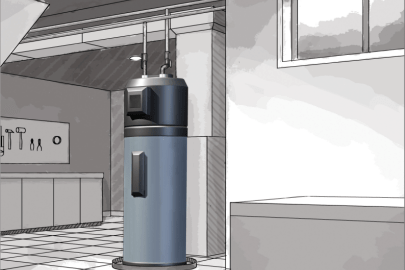Top Ways to Care for Your Home's Hot Water System Effectively
Top Ways to Care for Your Home's Hot Water System Effectively
Blog Article
Each person will have their private assumption on the subject of Tips For Maintaining Your Hot Water Heater.

Warm water is essential for daily convenience, whether it's for a refreshing shower or washing dishes. To ensure your hot water system runs effectively and lasts longer, routine maintenance is crucial. This post offers functional ideas and understandings on just how to preserve your home's warm water system to prevent disturbances and pricey fixings.
Intro
Keeping your home's warm water system could appear overwhelming, however with a couple of basic steps, you can ensure it operates smoothly for years to come. This overview covers every little thing from comprehending your warm water system to DIY maintenance suggestions and knowing when to hire specialist aid.
Relevance of Preserving Your Hot Water System
Regular upkeep not only extends the lifespan of your warm water system however likewise ensures it operates effectively. Overlooking maintenance can lead to lowered performance, greater power expenses, and even premature failing of the system.
Indicators Your Warm Water System Needs Maintenance
Knowing when your warm water system requires interest can avoid major concerns. Watch out for indications such as irregular water temperature level, odd noises from the heater, or rusty water.
Understanding Your Warm Water System
Prior to diving right into upkeep jobs, it's handy to recognize the standard elements of your hot water system. Normally, this consists of the water heater itself, pipes, anode poles, and temperature controls.
Monthly Upkeep Tasks
Regular month-to-month checks can assist catch small problems before they rise.
Flushing the Hot Water Heater
Purging your water heater gets rid of sediment build-up, enhancing efficiency and extending its life.
Checking and Changing Anode Rods
Anode rods stop corrosion inside the container. Examining and changing them when worn out is essential.
Evaluating and Changing Temperature Level Settings
Readjusting the temperature setups guarantees optimum performance and safety and security.
DIY Tips for Upkeep
You can carry out numerous maintenance jobs yourself to maintain your hot water system in leading problem.
Checking for Leakages
Frequently evaluate pipelines and connections for leakages, as these can result in water damages and greater bills.
Examining Pressure Alleviation Valves
Checking the pressure safety valve ensures it operates correctly and stops too much pressure accumulation.
Insulating Pipes
Shielding hot water pipes minimizes warmth loss and can conserve energy.
When to Call an Expert
While do it yourself maintenance is helpful, some concerns call for professional know-how.
Facility Concerns Requiring Expert Aid
Examples include major leakages, electric problems, or if your water heater is constantly underperforming.
Regular Professional Maintenance Perks
Specialist upkeep can include extensive examinations, tune-ups, and making sure conformity with safety standards.
Final thought
Routine upkeep of your home's hot water system is important for effectiveness, durability, and expense financial savings. By adhering to these pointers and knowing when to look for specialist aid, you can ensure a dependable supply of hot water without unanticipated disturbances.
How to Maintain an Instant Hot Water Heater
Before tinkering with your hot water heater, make sure that it’s not powered on. You also have to turn off the main circuit breaker and shut off the main gas line to prevent accidents. Also turn off the water valves connected to your unit to prevent water from flowing into and out of the appliance. 2. When you’re done, you have to detach the purge valves’ caps. These look like the letter “T†and are situated on either side of the water valves. Doing so will release any pressure that has accumulated inside the valves while at the same time avoid hot water from shooting out and burning your skin. 3. When the purge valves’ caps are removed, you have to connect your hosing lines to the valves. Your unit should have come with three hoses but if it didn’t, you can purchase these things from any hardware or home repair shops. You can also get them from retail stores that sell water heating systems. Read the user’s manual and follow it to complete this task properly. When the hosing lines are connected, open the purge port’s valves. 4. You should never use harsh chemical cleaners or solutions when cleaning your unit. Make use of white vinegar instead. It should be undiluted and you’ll probably use about 2 gallons. 5. Now flush your water heater. This task should probably take about 40 minutes. We can’t give you specific directions for this because the procedure is carried out depending on the type, model and brand of your heater. With that being said, refer to the user’s manual. 6. When you’re done draining the unit, you have to turn off the purge port valves again. Remove the hosing lines that you earlier installed on each of the water valves. Put the valve caps (purge port) back in their respective places and be very careful so as not to damage the rubber discs that are found inside these caps. 7. Now that everything’s back in place, check your user’s manual again to find out how to reactivate your water heating system. 8. Once it is working, turn one of your hot water faucets on just to let air pass through the heater’s water supply pipes. Leave the tap on until water flows smoothly out of it. https://www.orrplumbing.com/blog/2014/september/how-to-maintain-an-instant-hot-water-heater/

We were guided to that report on How to Maintain Your Water Heater & Prolong its Life from an acquaintance on another blog. Remember to pause to share this blog post if you enjoyed it. I truly appreciate your readership.
Book Now Report this page